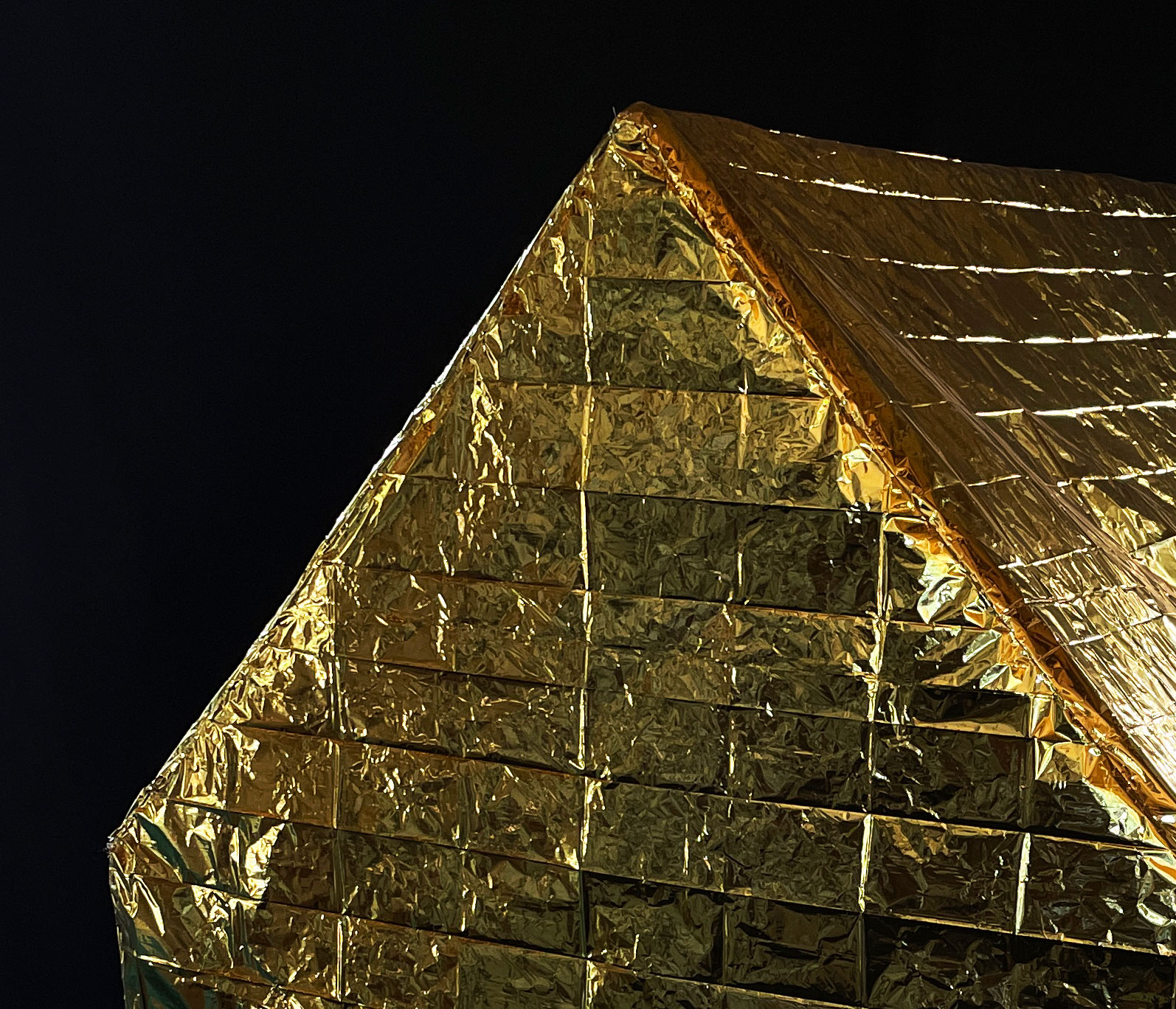
Sapiens’ Space Shelter Home
If you’d like to hear about the artwork,
please find the audioguide here.

Janine Thüngen-Reichenbach’s sculptural work, Sapiens’ Space Shelter Home, reimagines the idea of home through the lens of a future human space traveler. Crafted from ultra-light material originally developed by NASA in 1964—now commonly used for emergency rescue blankets—this structure resembles a traditional Central European rectangular house with a roof. Its golden, foldable, and reversible form offers insulation against heat or cold, emphasizing practicality for nomadic life in outer space. At the same time, its familiar silhouette starkly contrasts with the hive-like modules envisioned by contemporary space architects, suggesting a deeper inquiry into what “home” truly means. Rather than purely functional habitation, the work reflects cultural memory and emotional identity. The house’s shape becomes symbolic, evoking not just shelter but also personal and collective values, referencing memory boxes that protect cherished keepsakes.
This exploration began with Thüngen-Reichenbach’s research into the origins of human homes and the archaeological traces left behind by early Homo sapiens. As they migrated from Africa into unfamiliar European territories some 45,000 years ago, these early humans faced challenges and marvels similar to those imagined in space exploration today. The artist draws a parallel between prehistoric nomads and future space travelers, both venturing into unknown terrain without certainty of shelter. Her shelter—constructed with space blankets and lightweight poles—is fully enclosed for maximum protection, yet retains the shape of a familiar Earthly home. This paradox—an Earth-like house in an alien environment—raises questions about the persistence of cultural identity in extreme contexts. Throughout history, migrating or colonizing cultures have carried with them not only their tools and technologies but also their aesthetic and architectural preferences. Thüngen-Reichenbach taps into this enduring human impulse, asking: What is home when you can carry so little? Is it a structure, a memory, or a set of values? Her work invites us to reflect on the essence of home, even in the most distant and uninhabitable places.
About the artist
Janine Thüngen Reichenbach is an all-encompassing artist who lives and works in Rome. She was born in Germany and has been working as a professional sculptor for 20 years, earning international acclaim. Her sculptures and installations can be found in museums, public spaces and important private collections in many countries around the world. She also collaborates with public and private organizations, educational institutions, charitable organizations, architects’ studios and other artists.
Janine’s sculptures are created from a variety of materials ranging from the traditional bronze, clay and glass to more unusual such as rubber, hemp, water, sound and even plants. The artist creates works of multiple sizes that expand in scale: from portable sculptures to sculptures of monumental proportions. There are many sound and land art installations.
Janine is inspired by the contrasts and juxtapositions found in humans, nature and space; the interactions between these elements are at the heart of her works. Time and space cadence the becoming of her work, which, always in constant search of new cues, also evolves through the fundamental co-participation with the viewer: the work created lives on this interaction, speaks with its materials and reflects the innumerable impressions that the interpreter of the work, that is, the viewer, makes of it.
Credits
.
Sapiens’ Space Shelter Home,
2025

